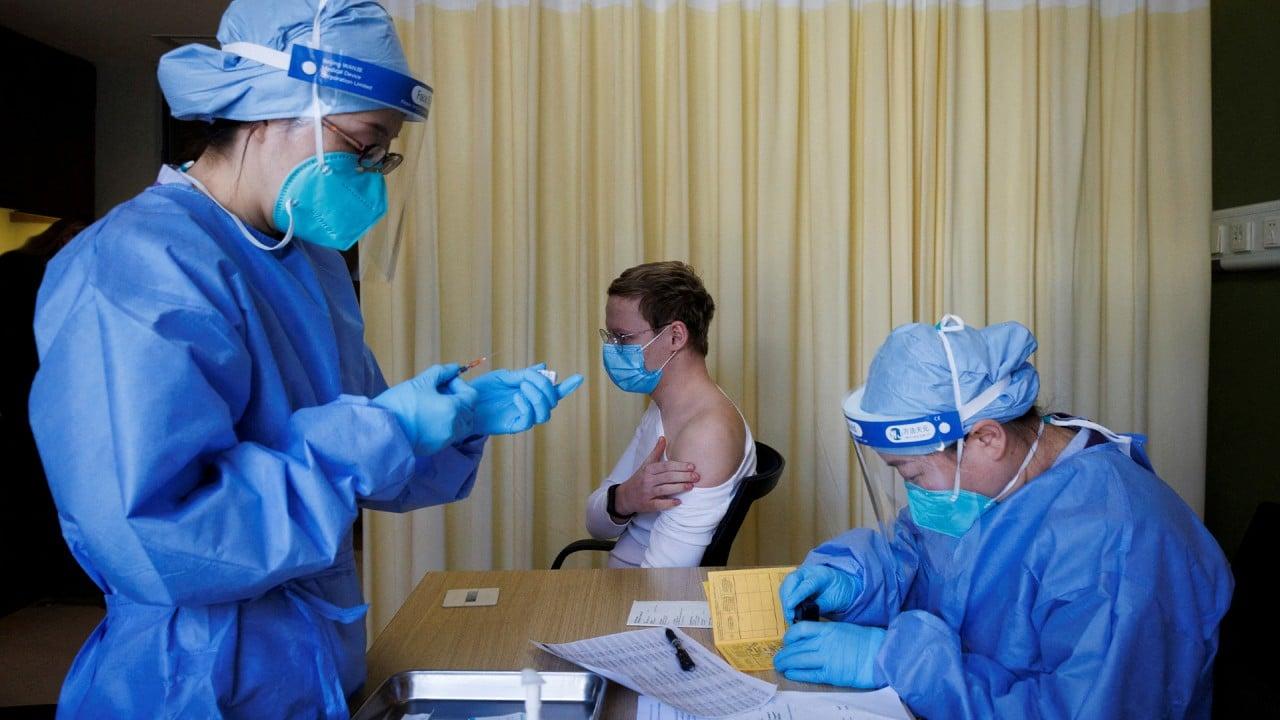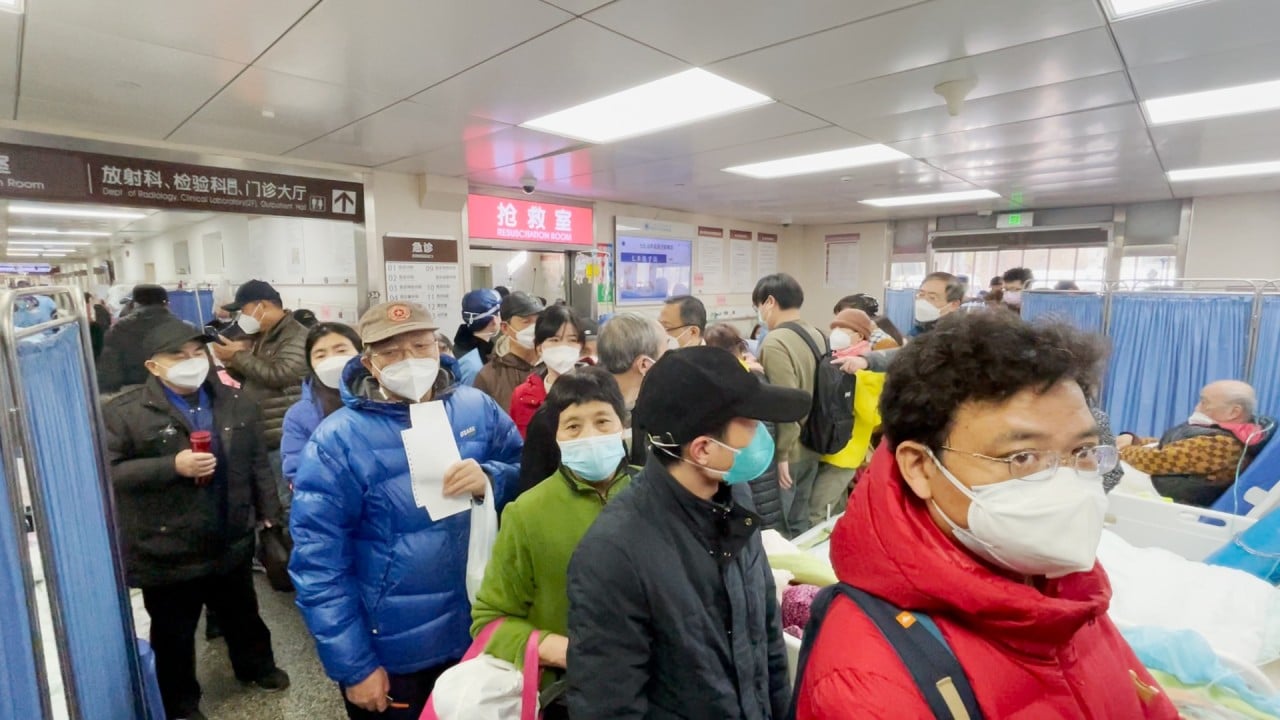
Hundreds of millions of people in China have been infected since the country’s abrupt shift from its zero-Covid policy in early December. For the first time since the pandemic began, people with “mild” symptoms, together with those who have asymptomatic infections, now supposedly account for 90 to 98 per cent of total infections, according to various mainland experts.
But for many, the symptoms do not feel anything like a common cold, as top respiratory disease expert Zhong Nanshan described last month. The “unbearable” pain, sore throats, body aches, and days of high fever and persistent coughs, have taken many Chinese Covid-19 patients by surprise, and some have taken to social media to question whether the experts were telling the truth when they said the Omicron version of Covid-19 was mild.
“The sore throat is killing me,” one person said online. “Do not trust the experts – go to the hospital if you’re ill,” another commented.
But according to experts interviewed by the Post, while many consider the symptoms unusual, medically, they are still considered “mild” and not unique to China.
They said that instead of differences in strains or immunity, the surprise might be due to the “wrong expectation” of symptoms by people in China, since statistics had always shown that the vast majority of cases were “asymptomatic”.
In March last year – when mass lockdowns in Shanghai began – China reported that more than 95 per cent of cases were “mild and asymptomatic”, but officials insisted on Beijing’s “dynamic zero” strategy, citing evidence that the Omicron variant was highly transmissible and could cause a huge number of infections in the country.
Up to the week before China reopened, the number of daily asymptomatic cases ranged from 82 to 89 per cent of the daily total local cases. The National Health Commission (NHC) stopped reporting the number of cases a week after it dropped mass testing.
Under the national guidelines, positive cases reported by the authorities are generally divided into two groups – confirmed and asymptomatic cases. An asymptomatic case is officially defined as a patient who does not have clinical symptoms, like fever and cough, and who does not have a CT scan indicating pneumonia. Under this definition, however, even people who have a “knife-cutting” sore throat – but not pneumonia – would still fall under the asymptomatic group.
While about 90 per cent of cases in Australia are also asymptomatic or mild, the trouble in China is that “by lumping asymptomatic and mild together, people get the wrong expectation”, according to Peter Collignon, a professor at the Australian National University Medical School.
“I’m not sure if it’s a good idea to put the two together because that gives people a false impression that this would be absolutely like I will not notice it, which is not true,” he said.
Jin Dongyan, a virologist at the University of Hong Kong, said China’s way of categorisation was “wrong, misleading and unacceptable”. But the actual severity of symptoms in China were more or less the same as the rest of the world, he said.
Jin added that even if someone’s throat felt like it was being cut by a knife, it was a “mild symptom”, as it was an upper respiratory infection – not pneumonia.
To be considered a “severe case”, a person had to be hospitalised, said Antoine Flahault, director of the Institute of Global Health at University of Geneva.
Flahault said that since there was limited information at the moment, it was difficult to tell if the symptoms of mild cases in China were more severe than elsewhere without an analysis comparing the current wave with the previous ones. But the research that was available had not indicated that the variants would affect groups differently based on ethnicity or nationality, he said.
“I haven’t heard about any difference in symptoms according to ethnicity or nationality. Some variants have been associated with more neurological symptoms, such as loss of taste or smell, when others are more often associated with digestive symptoms such as diarrhoea and vomiting. But nothing with regards [to] severity up to now,” Flahault said.
It was also unclear whether the use of non-mRNA vaccines in China would cause different kinds of mild symptoms, compared to those associated with mRNA vaccines, he added.
He said no research had fully explained the effects of vaccines on mild symptoms yet, since immunity against mild upper respiratory infections was much more demanding on antibodies than that required against severe forms of Covid.
At this point, the Omicron strain circulating in China is still dominated by BA. 5.2 and BF. 7 lineages, which were also spread in most countries in Europe as well as the United States, according to the Chinese Centre for Disease Control and Prevention.
On Tuesday, based on the genomic data that had been provided by China, the World Health Organization concluded “no new variant or mutation of known significance is noted”.
With people contracting the same strains, most symptoms in China, like fever, cough and fatigue, were similar to those in Europe, said Therese Hesketh, a global health professor at University College London.
“Diarrhoea seems to be more common in China. People also talk about more severe symptoms, especially in the elderly, like myocarditis,” she said.
But she added the evidence now largely came from social media and was still weak.
“I think individuals, what they particularly note on social media, it’s true for them, but is not representative of what the vast majority of people are getting,” said Collignon, the Australia-based professor. After all, there was a wide range of symptoms and what everyone experienced could vary, he said.
On Sunday, Chinese officials formally clarified that Covid-19 should not be compared to a “cold” – but to a “flu” – in an effort to discourage underestimations of the risks.
Like a flu, Covid-19 carried the risk of pneumonia, Jiao Yahui, director of the medical affairs department of the NHC, told state broadcaster CCTV on Monday.
“But the type of pneumonia is far from the ‘white lung’ level, which internet users described, and they will quickly recover after treatment,” she said, referring to a condition in which up to 80 per cent of a lung appears white on a CT scan, indicating serious inflammation.
China will remove pneumonia from the Chinese name for Covid-19 and change it to “infection” from Sunday.



